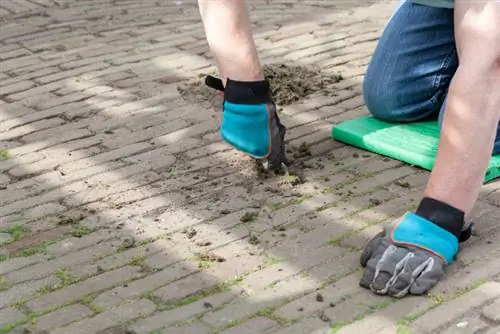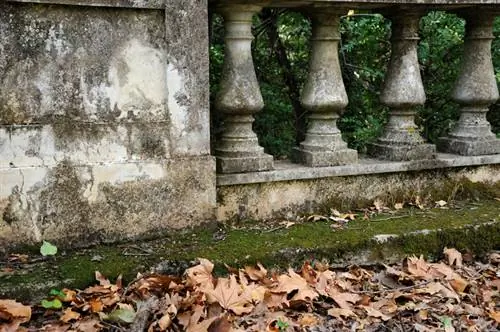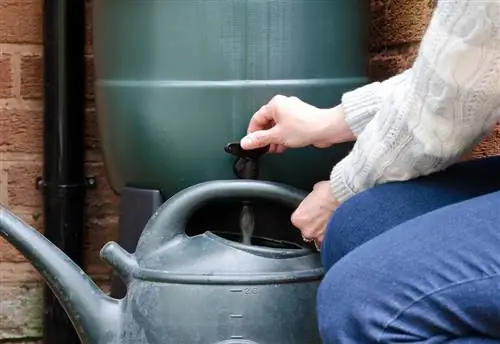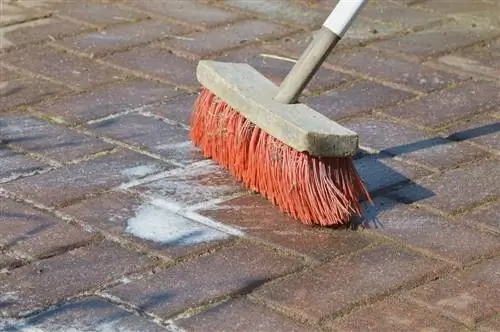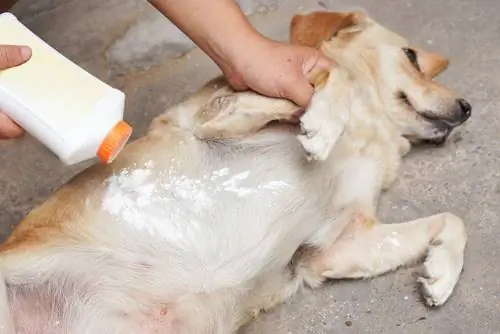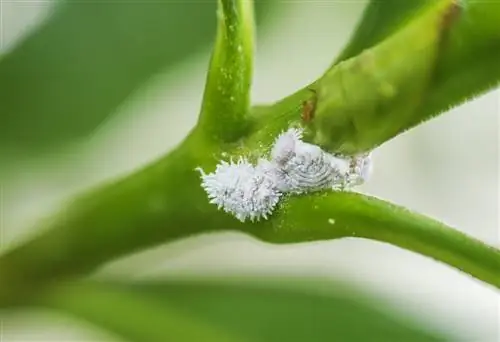- Author admin [email protected].
- Public 2023-12-16 16:46.
- Last modified 2025-06-01 06:02.
Where the garden, balcony and terrace are shady and damp, moss and algae are not far away. The dirty green surface spoils the well-kept appearance and makes the floor dangerously slippery. You can find out how to remove moss and algae with simple home remedies here.
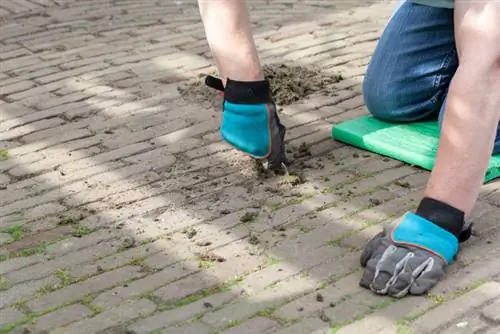
How can moss and algae be effectively removed?
Moss and algae can be removed with home remedies: Use either a mixture of 20-30 grams of soda and 1 liter of hot water or undiluted fruit or wine vinegar and leave it to act for a few hours before scrubbing off the dead residue.
This is how soda makes the balcony and garden paths attractive again
The classic cleaning agent doesn't give up on moss and algae either. This is how you can completely remove the green deposits with washing soda and elbow grease:
- Roughly scrape off moss and algae using a spatula (€10.00 on Amazon) or a joint scraper
- Make a mixture of 20 to 30 grams of soda and 1 liter of hot water
- Spread on the green surface and leave for a few hours
Then dead moss and algae should be thoroughly scrubbed off. Treat stubborn residues again with the soda water until the surface shines with its original freshness and sparkling clean.
Using vinegar to combat moss and algae - this is how it works
There is an effective remedy against moss and algae on the kitchen shelf. Vinegar is not only useful as a cleaning agent against dirt, mold and limescale, but also removes green pests from paths, balconies and terraces. How to use the home remedy correctly:
- Scrape off coarse moss and algae cushions in advance to increase effectiveness
- Spray undiluted fruit or wine vinegar
- Alternatively, dilute vinegar essence with water and apply
Moss and algae die within a short time. If the green coating has turned brown, scrub it off with a hard broom. If necessary, the treatment can be repeated. Vinegar should only not be used on natural stone, such as marble, or on calcareous floors, as stains can form.
Tip
Once you have removed moss and algae from paving with the joint scraper, polymer joint sand effectively prevents re-infestation. Instead of filling the scratched out cracks with simple sand, swept-in polymer joint sand deprives the weeds of any chance of re-establishing themselves here.

